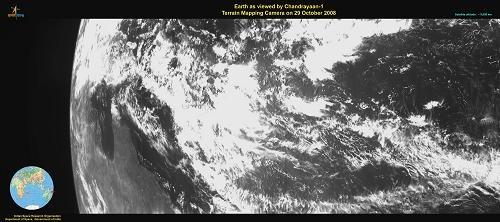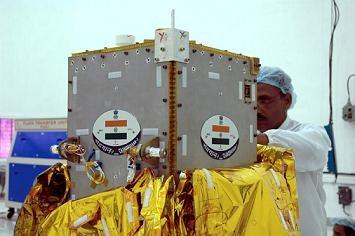Objectives
- Design, develop, launch and orbit a spacecraft around the Moon using an Indian-made launch-vehicle
- Conduct scientific experiments using instruments on the spacecraft which would yield data:
- for the preparation of a three-dimensional atlas (with high spatial and altitude resolution of 5–10 m or 16–33 ft) of both the near and far sides of the Moon
- for chemical and mineralogical mapping of the entire lunar surface at high spatial resolution, mapping particularly the chemical elements magnesium, aluminium, silicon, calcium, iron, titanium, radon, uranium, and thorium
- Increase scientific knowledge
- Test the impact of a sub-satellite (Moon Impact Probe – MIP) on the surface of the Moon as a fore-runner for future soft-landing missions
Goals
- High-resolution mineralogical and chemical imaging of the permanently shadowed north- and south-polar regions
- Searching for surface or sub-surface lunar water-ice, especially at the lunar poles
- Identification of chemicals in lunar highland rocks
- Chemical stratigraphy of the lunar crust by remote sensing of the central uplands of large lunar craters, and of the South Pole Aitken Region (SPAR), an expected site of interior material
- Mapping the height variation of features of the lunar surface
- Observation of X-ray spectrum greater than 10 keV and stereographic coverage of most of the Moon's surface with 5 m (16 ft) resolution
- Providing new insights in understanding the Moon's origin and evolution[citation needed]
Source: https://en.wikipedia.org/wiki/Chandrayaan-1#Objectives


